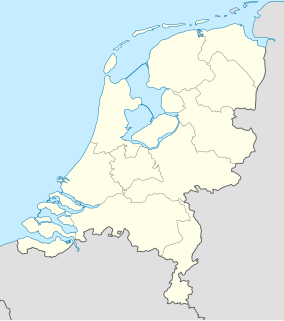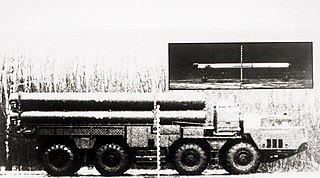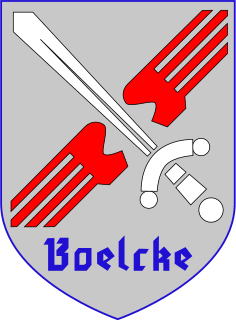| Missile Wing 2 | |
|---|---|
| German: Flugkörpergeschwader 2 | |
 | |
| Active | 1965–1991 |
| Disbanded | 1991 |
| Country | |
| Branch | |
| Part of | 3rd Luftwaffendivision, Second Allied Tactical Air Force |
Missile Wing 2 (German : Flugkörpergeschwader 2, FKG 2) was a unit of the German Air Force. It was activated on 1 January 1965 in Lechfeld with two subordinate units: Missile Group 21 (German : Flugkörpergruppe 21) and Missile Group 22 (German : Flugkörpergruppe 22). [1]

German is a West Germanic language that is mainly spoken in Central Europe. It is the most widely spoken and official or co-official language in Germany, Austria, Switzerland, South Tyrol (Italy), the German-speaking Community of Belgium, and Liechtenstein. It is also one of the three official languages of Luxembourg and a co-official language in the Opole Voivodeship in Poland. The languages which are most similar to German are the other members of the West Germanic language branch: Afrikaans, Dutch, English, the Frisian languages, Low German/Low Saxon, Luxembourgish, and Yiddish. There are also strong similarities in vocabulary with Danish, Norwegian and Swedish, although those belong to the North Germanic group. German is the second most widely spoken Germanic language, after English.

The German Air Force is the aerial warfare branch of the Bundeswehr, the armed forces of Germany. With a strength of 27,767 personnel, it is the fourth largest air force within the European Union, after the air forces of the United Kingdom, France, and Italy. Although its budget has been significantly reduced since the end of the Cold War in 1989–1990, the Luftwaffe is still among the best-equipped air forces in the world.
Contents
Missile Group 21 moved to Nörvenich in September 1965. In 1976, the Quick Reaction Alert (QRA) site at Arsbeck became operational for FKG 2, and QRA Nörvenich was used for training. In November 1986, QRA Arsbeck was closed.

Nörvenich is a municipality in the district of Düren in the state of North Rhine-Westphalia, Germany. It is located about 10 km (6 mi) east of Düren.
Warheads were under U.S. control, released only in wartime conditions. [2] Warheads were controlled by the 85th U.S. Army Field Artillery Detachment (85th USAFAD) from 1969 to 1991.
Pershing 1b was a single stage, reduced range version of the Pershing II with the same range as the Pershing 1a. The Pershing II launcher was designed so that the cradle could be easily repositioned to handle the shorter missile airframe. The intent was to replace the German Air Force's Pershing 1a systems with Pershing 1b, since SALT II limited the range of German-owned missiles. The German government agreed to destroy its Pershing 1a systems when the U.S. and the U.S.S.R. signed the Intermediate-Range Nuclear Forces Treaty on 27 May 1988, thus the Pershing 1b was never deployed. Although not covered by the treaty, West Germany agreed unilaterally to the removal of the Pershing 1a missiles from its inventory in 1991, and the missiles were destroyed in the United States.

The Pershing II Weapon System was a solid-fueled two-stage ballistic missile designed and built by Martin Marietta to replace the Pershing 1a Field Artillery Missile System as the United States Army's primary nuclear-capable theater-level weapon. The U.S. Army replaced the Pershing 1a with the Pershing II Weapon System in 1983, while the German Air Force retained Pershing 1a until all Pershings were eliminated in 1991. The U.S. Army Missile Command (MICOM) managed the development and improvements, while the Field Artillery Branch deployed the systems and developed tactical doctrine.

The Intermediate-Range Nuclear Forces Treaty was an arms control treaty between the United States and the Soviet Union. U.S. President Ronald Reagan and Soviet General Secretary Mikhail Gorbachev signed the treaty on 8 December 1987. The United States Senate approved the treaty on 27 May 1988, and Reagan and Gorbachev ratified it on 1 June 1988.
The wing was deactivated on 31 December 1991.
















